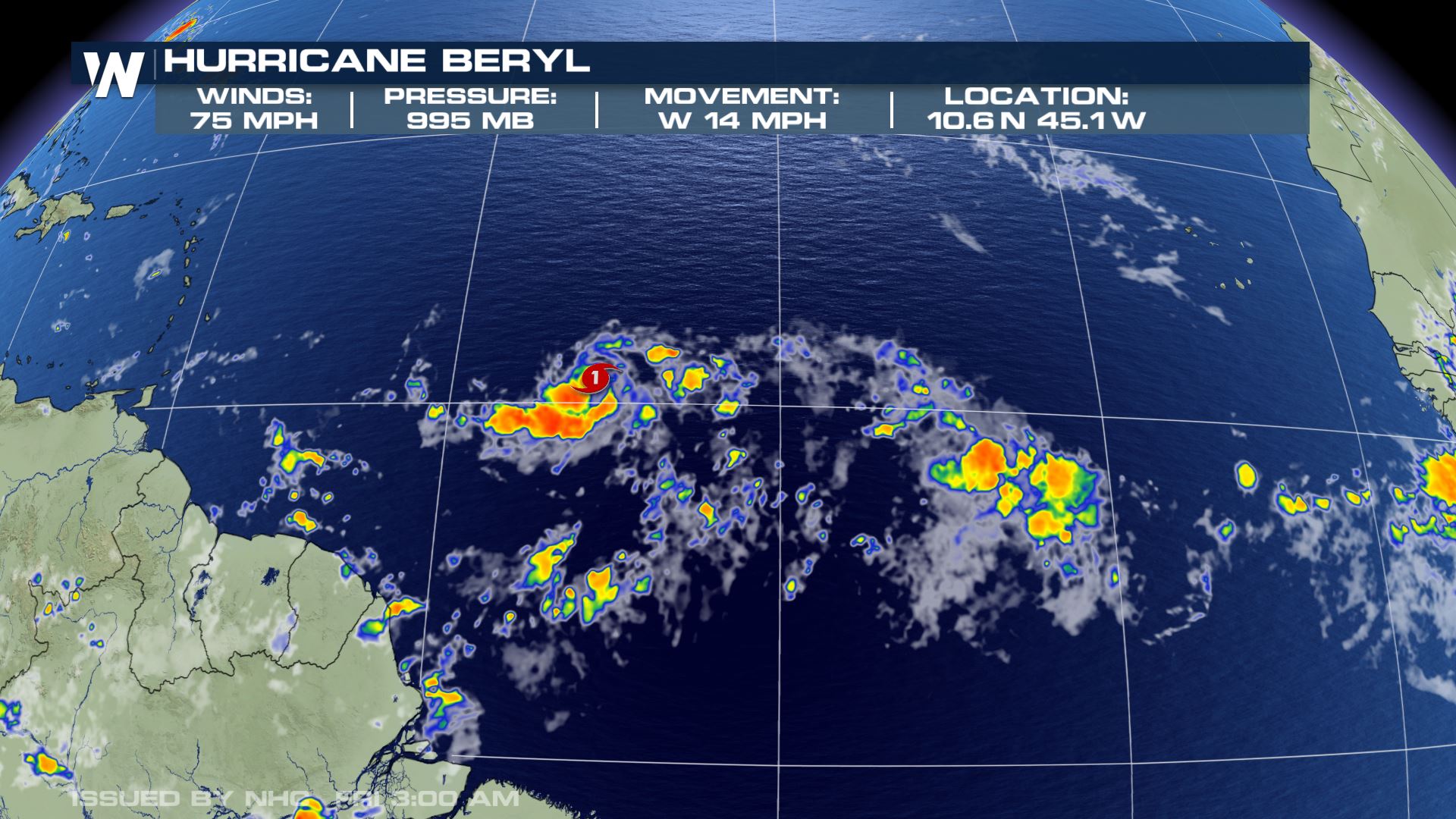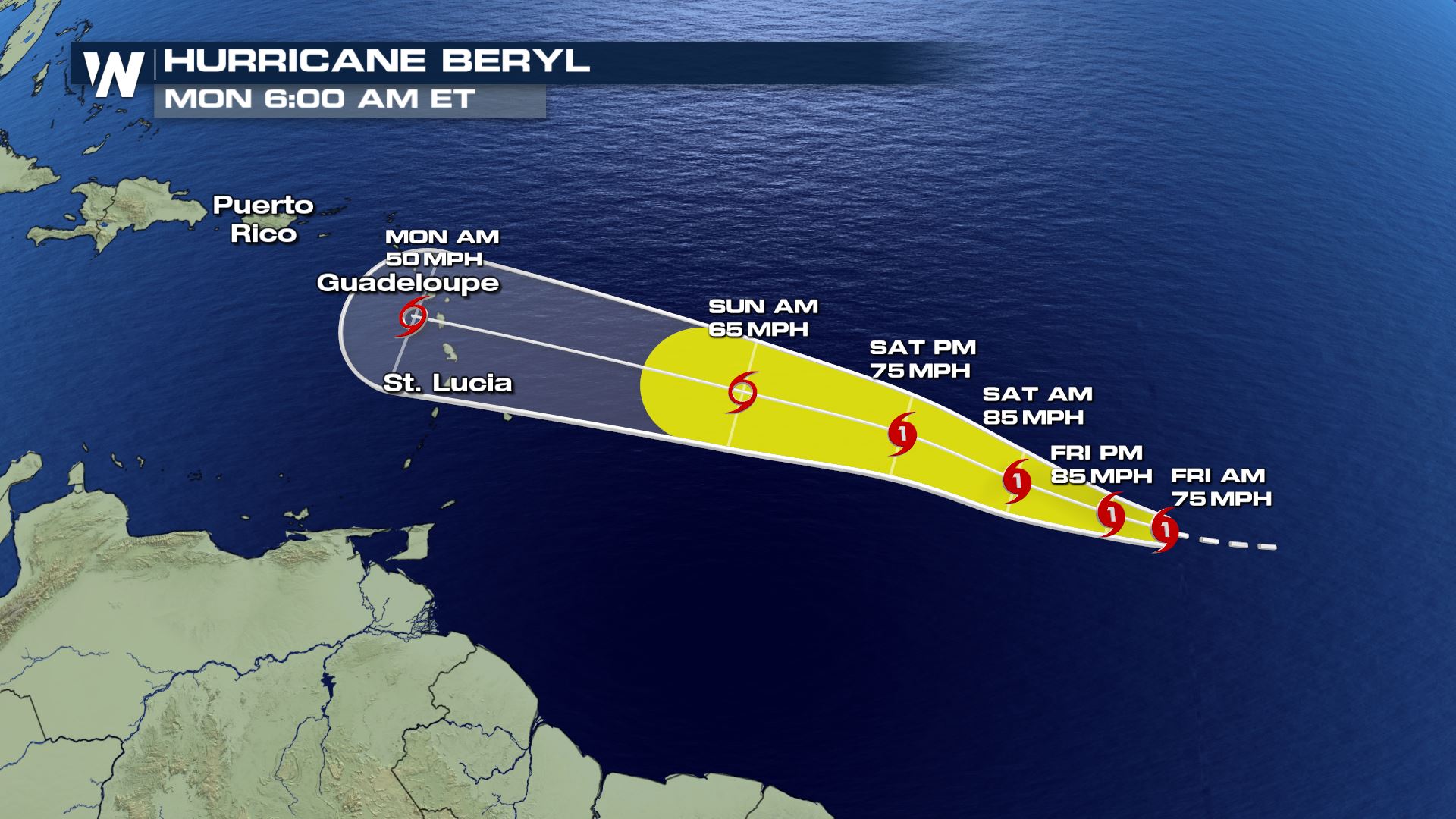Hurricane Beryl’s Predicted Path

Hurricane beryl prediction – Hurricane Beryl is expected to make landfall on the east coast of Florida by late Tuesday night or early Wednesday morning. The storm is currently moving northwest at 12 mph, and is expected to turn more to the north-northeast as it approaches the coast.
Weathermen done predict say Hurricane Beryl go hit Barbados hard, hard. For more info bout Hurricane Beryl and Barbados, check out barbados hurricane beryl. Make sure you stay safe and listen to the authorities when Hurricane Beryl come.
The National Hurricane Center has issued a hurricane warning for the east coast of Florida from Jupiter Inlet to Vero Beach, including Lake Okeechobee. A tropical storm warning is in effect for the remainder of the east coast of Florida, as well as for the west coast of Florida from Englewood to the Anclote River.
The storm is expected to bring heavy rain, strong winds, and storm surge to the affected areas. Residents in these areas should take precautions and follow the instructions of local officials.
Hurricane Beryl is a brewing storm that’s got folks on edge. To get a clearer picture of its path, meteorologists are turning to tropical storm beryl spaghetti models. These models simulate the storm’s potential trajectories, helping experts predict where it might head and how strong it could get.
By analyzing these models, we can stay informed and prepared for Hurricane Beryl’s potential impact.
Factors Influencing Hurricane Beryl’s Movement
The movement of Hurricane Beryl is influenced by a number of factors, including wind patterns, ocean currents, and atmospheric conditions.
- Wind patterns: The direction and speed of the wind at different levels of the atmosphere can influence the movement of a hurricane. Hurricanes typically move in the direction of the prevailing winds at the mid-levels of the atmosphere.
- Ocean currents: The movement of ocean currents can also influence the movement of a hurricane. Hurricanes can be steered by ocean currents, which can either speed up or slow down the storm’s progress.
- Atmospheric conditions: The atmospheric conditions around a hurricane can also influence its movement. For example, if there is a strong high-pressure system to the north of a hurricane, it can block the storm’s movement to the north.
Potential Impacts of Hurricane Beryl

Hurricane Beryl is predicted to bring a range of potential impacts to the affected areas. These impacts include high wind speeds, storm surge, and heavy rainfall.
The strongest winds are expected to be near the center of the hurricane, with sustained winds of up to 120 mph. These winds can cause extensive damage to buildings, infrastructure, and trees. Storm surge, which is a rise in sea level caused by the hurricane, can also be a major threat. Storm surge can cause flooding in coastal areas, and can also damage or destroy buildings and infrastructure.
In addition to wind and storm surge, Hurricane Beryl is also expected to bring heavy rainfall. Rainfall amounts of up to 10 inches are possible in some areas. This rainfall can cause flooding, which can damage homes and businesses, and can also lead to mudslides.
The areas most likely to be affected by the hurricane’s impacts are those in the path of the hurricane. These areas include the Leeward Islands, Puerto Rico, the Dominican Republic, and the Bahamas. Residents in these areas should be prepared for the hurricane’s impacts, and should take steps to protect themselves and their property.
What Individuals and Communities Can Do to Prepare
There are a number of things that individuals and communities can do to prepare for the potential impacts of Hurricane Beryl. These include:
- Monitoring the hurricane’s progress and staying informed about the latest forecasts.
- Having a plan in place for what to do if the hurricane makes landfall.
- Gathering emergency supplies, such as food, water, first aid kits, and flashlights.
- Securing loose objects around your home, such as patio furniture and grills.
- Boarding up windows and doors.
- Evacuating to a safe location if necessary.
By taking these steps, individuals and communities can help to reduce the potential damage caused by Hurricane Beryl.
Historical Context and Comparisons: Hurricane Beryl Prediction

Understanding the historical context of hurricanes that have impacted the region where Hurricane Beryl is predicted to make landfall provides valuable insights for preparedness and response efforts. By comparing Beryl’s predicted intensity and trajectory to past hurricanes, we can learn from the lessons of history and make informed decisions to mitigate potential risks.
Historical Hurricanes in the Region
The region has experienced several notable hurricanes in the past, including Hurricane Katrina (2005), Hurricane Ike (2008), and Hurricane Sandy (2012). These hurricanes caused significant damage and loss of life, highlighting the importance of preparedness and effective response measures.
Comparison to Hurricane Beryl
Hurricane Beryl’s predicted intensity and trajectory show similarities to some of these historical hurricanes. For instance, Beryl’s predicted path resembles that of Hurricane Ike, which made landfall in the same region in 2008. Both hurricanes are expected to bring high winds, storm surge, and heavy rainfall, posing similar threats to coastal communities.
Lessons Learned, Hurricane beryl prediction
The lessons learned from past hurricanes have informed preparedness and response efforts for Hurricane Beryl. For example, the devastating impact of Hurricane Katrina led to improvements in evacuation plans and emergency response coordination. Similarly, the experience with Hurricane Sandy highlighted the importance of investing in coastal infrastructure and resilience measures to mitigate storm surge and flooding.